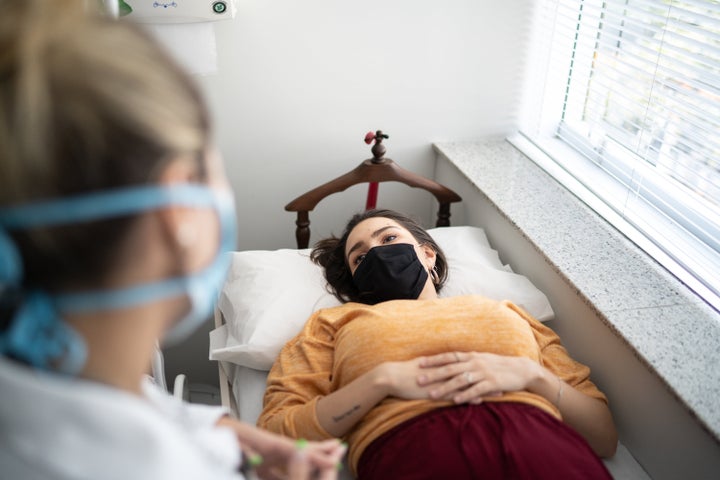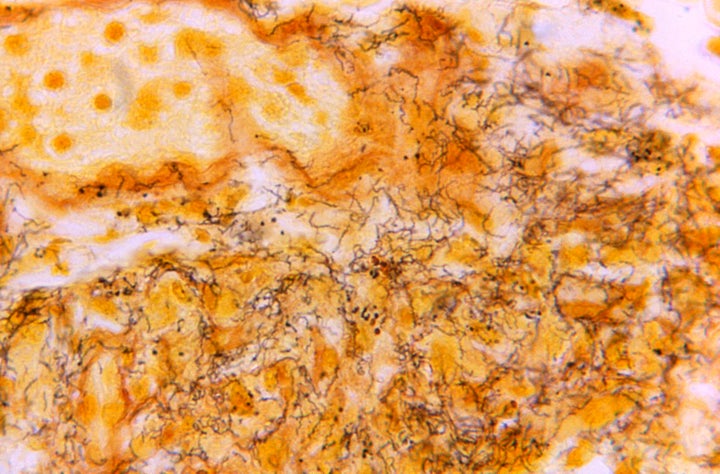
Cases of syphilis have hit the highest rate of new infections since the 1950s, according to a new report from the Centers for Disease Control and Prevention. From 2018 to 2022, cases skyrocketed by nearly 80%, totalling more than 207,000.
“We have long known that these infections are common, but we have not faced such severe effects of syphilis in decades,” Dr. Laura Bachmann, acting director of the CDC’s division of sexually transmitted disease prevention, said in the statement released with the report. “It has emerged as a unique public health challenge.”
Rates of the most infectious stages of syphilis ― called primary and secondary ― rose in all age groups and in all regions across the country, but the CDC noted that Black and Latino communities were disproportionately affected due to longstanding social inequities “that often lead to health inequalities.”
Another troubling finding? Among the cases reported, more than 3,700 were congenital syphilis, which is transmitted to a baby during pregnancy. That’s a 937% increase over a decade.
Congenital syphilis can be fatal to newborns and if left untreated can cause health issues later in life, said Dr. Kenosha Gleaton, a board-certified OB-GYN and medical adviser at Natalist, a women’s health company that focuses on pregnancy and conception.
“It’s important to treat syphilis immediately, especially if you’re pregnant, because it can lead to a number of issues during your pregnancy, birth and postpartum state,” she told HuffPost.
Syphilis can also lead to an increased risk of miscarriage, premature birth and stillbirth, Gleaton said.
As for why syphilis is increasing in general, the CDC pointed to a number of reasons: lax condom use; an increase in substance abuse, which is often tied to risky sexual behaviour; and people facing “tremendous barriers” to sexually transmitted infection prevention and health services, such as screenings. The COVID-19 pandemic and lockdown strained public health programs even further.

And unfortunately with syphilis, the symptoms aren’t always easy to notice; the STI is often referred to as “the great imitator,” because of its ability to mimic other diseases. The elusive nature of its symptoms is why it’s best to go and get tested if you’re concerned you may have contracted it. In its beginning stages, syphilis is easily curable with the right antibiotics.
There are four stages of syphilis, some of which tend to overlap, but it’s most infectious during the primary and secondary stages.
The Signs Of Primary Syphilis
When you come in contact with syphilis ― usually through sex with a person who has a sore ― the bacteria can live in your body for years without producing any symptoms, but that’s not the norm, Gleaton said.
You generally see one or multiple small sores (which doctors call “chancres”) within three weeks of being exposed to the syphilis bacteria, Gleaton added.
Chancres are highly contagious and tend to show up around the penis, vagina, rectum and, less commonly, the mouth. The sores are often hard to identify because they may be hidden inside your vagina or under the foreskin. They can even be mistaken for pimples or an ingrown hair.
“The sore is often painless and goes away on its own, but the syphilis bacteria will live in your body and progress over time if it’s left untreated,” Gleaton told HuffPost.
“The way your body reacts to syphilis bacteria can really vary, so I always recommend that my patients stay up to date on their STI testing, especially if they are pregnant,” she said.

The Signs Of Secondary Syphilis
If syphilis is left untreated, some (but not all) people develop the secondary stage, which includes a rash, said Dr. Philip A. Chan, an associate professor at Brown University and the medical director of the Rhode Island Department of Health.
“The rash can be anywhere on the body but classically involves the palms of your hands and the soles of your feet,” he said. “People may also experience fevers, chills, enlarged lymph nodes, malaise and other symptoms.”
If your rash and those mild flu-like symptoms go away, you’re not out of the woods, so you should still go get tested.
“No matter how progressive the symptoms are, they will actually clear on their own without treatment, but the syphilis bacteria will continue to live in your body and can lead to health issues later in life,” Gleaton said.
If left untreated, late stages of syphilis can cause blood vessel and heart problems, tumors, blindness, paralysis and even death.
How To Treat Syphilis In The Early Stages
Hearing about those early signs of syphilis ― chancres, a rash and flu-like symptoms ― may be unnerving, but the good news is that syphilis is easily treated with antibiotics, Gleaton said.
If you’re in any way concerned, talk to your primary care doctor or another medical provider who specialises in sexual health.
“Testing for syphilis generally includes a blood test,” Chan said. “Syphilis continues to be highly susceptible to penicillin, and treatment typically includes between one and three shots of a long-acting penicillin formulation.”
While you’re there, you should also be tested for other STIs, including HIV. Bottom line: There’s no shame in addressing any issues you have with your sexual health, and there’s treatment that can help.
“As an OB-GYN, I’ve seen an uptick of STI cases at my private practice in Charleston, South Carolina, from millennials to women over 45,” Gleaton said. “I’ve seen the fear and shame patients feel when they receive a positive STI diagnosis, but it’s so important that we educate and destigmatise this scenario.”